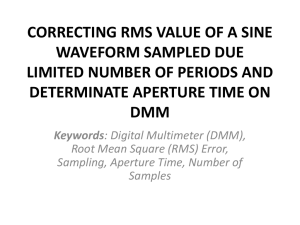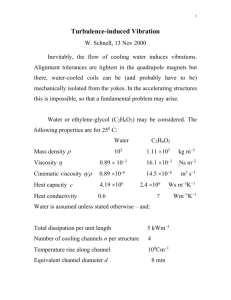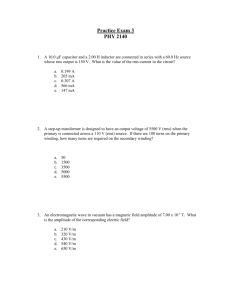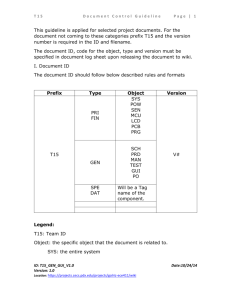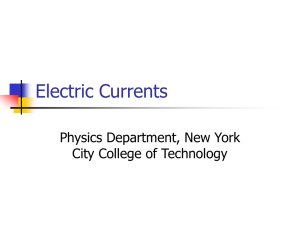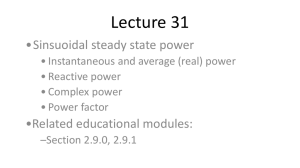Microphone suppression of air
advertisement
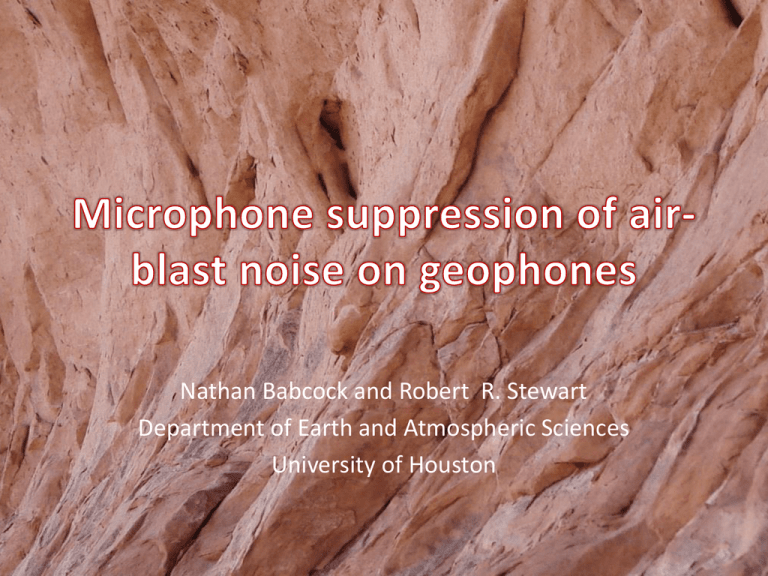
Nathan Babcock and Robert R. Stewart Department of Earth and Atmospheric Sciences University of Houston • What is air-noise? – Near surface model – Ground-to-air conversion • How does air-noise affect a geophone? – Distance dependency – Angular dependency – Frequency dependency • Filter methods – – – – Previous work Real-time filter Post-processing filter Filter results on lab data • Conclusions (Shields, 2005) Near surface model Atmosphere (𝑍 ≠ 0) Topsoil (weathering layer) (poroelastic) Unconsolidated sediment (poroelastic) Compacted sediment (effectively non-porous) Direct travel Direct travel Direct transmission (Bass et al., 1980) (Sabatier et al., 1986a) Direct travel Direct transmission Ground roll conversion (Press and Ewing, 1951) Direct travel Direct transmission Ground roll conversion Slow wave conversion (Sabatier et al., 1986b) Distance relationship Amplitude • Air wave decays near 1/𝑅2 • Geologic events decay as 1/𝑅 • (Air-ground interaction) • Air wave decays near 1/𝑅1.3 • Sound pressure in a half-space decays as 1/𝑅 • (interaction with tree line?) Angular relationship Vertical component RMS response Sensitive to ~210° Inline component RMS response Sensitive to ~0° & 180 ° Microphone RMS response Omnidirectional Amplitude Crossline component RMS response Sensitive to ~270° Angular relationship Vertical component RMS response Sensitive to ~210° Inline component RMS response Sensitive to ~0° & 180 ° Microphone RMS response Omnidirectional Amplitude Crossline component RMS response Sensitive to ~270° Frequency relationship Amplitude Filtering in the time-frequency domain (Gabor filter) • Create null mask from microphone record • Multiply geophone record by null mask (After Alcudia, 2009) • Air-noise filters must handle variability in noise source: – Distance – Angle – Frequency • The post-processing filter is more effective than the real-time filter – Increased computing power and processing time • Alcudia, A. D., 2009, Microphone and geophone data analysis for noise characterization and seismic signal enhancement: M.Sc thesis, University of Calgary. • Bass, H. E, L. N. Bolen, D. Cress, J. Lundien, and M. Flohr, 1980, Coupling of airborne sound into the earth: Frequency dependence: The Journal of the Acoustical Society of America, 67, 1502. • Press, F., and M. Ewing, 1951, Ground roll coupling to atmospheric compressional waves: Geophysics, 16, 416. • Sabatier, J. M., H. E. Bass, and L. N. Bolen, 1986a, The interaction of airborne sound with the porous ground: The theoretical formulation: The Journal of the Acoustical Society of America, 79, 1345. • Sabatier, J. M., H. E. Bass, and L. N. Bolen, 1986b, Acoustically induced seismic waves: The Journal of the Acoustical Society of America, 80, 646. • Shields, D. F., 2005, Low-frequency wind noise correlation in microphone arrays: The Journal of the Acoustical Society of America, 117, 3489. • • Photo credits: Alfred Borchard, W. Beate, István Benedek

